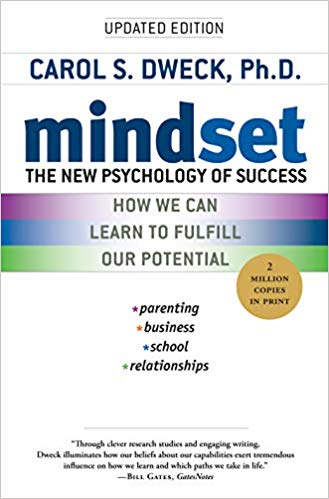

This article is an excerpt from the Shortform summary of "Mindset" by Carol Dweck. Shortform has the world's best summaries of books you should be reading.
Like this article? Sign up for a free trial here .
What does it mean to have truly high expectations for students? Why are high expectations so important? Can expectations be too high?
We’ll cover examples of teachers who hold exceptionally high expectations in the classroom, and we’ll look at why student success often starts with his teacher’s mindset. We’ll also look at situations in which high expectations can be damaging.
The Theory of High Expectations Teaching
Along with growth-oriented parents, children need growth-minded teachers and coaches to help them learn to develop and succeed. This is the theory of high expectations for students. Famous teachers Marva Collins and Rafe Esquith taught from a growth mindset. They believed in the growth of ability and intellect, and they loved both learning and fostering development and learning in their students. They created a nurturing environment in which they emphasized standards and hard work. They had high expectations for students.
High Expectations for Students and Hard Work
Marva Collins taught Chicago children who had reached a dead end. For instance, one boy had attended thirteen schools in four years and another had been kicked out of a mental health center. On her first day, Collins told the students: ‘Welcome to success. But success is not coming to you, you must come to it.”
Her students worked all day with only a short lunch break. They wrote every day and, as their skills grew, they tackled increasingly difficult material. This is a great example of high expectations in the classroom. When 60 Minutes did a program on the school, the children expressed pride in working hard. One student told reporter Mike Wallace that he liked the hard work “because it makes your brain bigger.”
Similarly, Rafe Esquith taught Los Angeles second graders form high-crime areas. Many had family members with drug, alcohol, and emotional problems, so the children didn’t get much support at home. To emphasize the value of effort, Esquith regularly reminded them of how much they’d learned and how difficult concepts had gotten easier with practice. He told them he wasn’t any smarter than they were, but he knew more because he worked at learning. His motto was, “There are no shortcuts.” This is another great example of high expectations for students. All students are expected to work hard.
High Expectations for Students and Nurturing
Collins had extremely high expectations for students. She was the exemplar of high expectations teaching.
For instance, three- and four-year-olds used a vocabulary book for high school students; seven-year-olds read The Wall Street Journal. However, she also created an atmosphere of love and concern. She also told the children she would love them even when they didn’t love themselves. This is an important element of high expectations teaching. You need the element of nurturing along with high expectations for students.
A caring, nonjudgmental learning environment is important for performance. Researchers who studied 102 high-achieving musicians, artists, athletes, and mathematicians found that their first teachers were warm, accepting, and committed to teaching them.
Like Collins, Esquith maintained an atmosphere of affection and personal commitment to his students, while having high expectations for students. He decried what he viewed as slipping standards in many schools, noting that educators don’t help children when they gloss over deficiencies — they consign them to continued failure and a lifetime of low-wage jobs. His fifth-grade reading assignments included: Of Mice and Men, Native Son, Bury My Heart at Wounded Knee, A Separate Peace, and To Kill a Mockingbird. He required his sixth-graders to pass an algebra final that eighth and ninth graders in most schools would struggle with. These are truly high expectations for students.
Besides having high expectations in the classroom, growth-minded teachers show students how to meet them. Collins didn’t just tell her students to read Shakespeare’s Macbeth. She and her students read and talked about each line together. Esquith spent considerable time planning passages for each student to read in class so that a shy child would succeed and a more advanced student would be challenged. He met with students before and after school and even on vacation. His goal was for students to be able to learn and think on their own. This is always the ultimate goal of high expectations teaching.
The Dangers of Expectations That Are Too High
It’s natural for parents and teachers to have high aspirations and high expectations for children, but sometimes parents and teachers allow their desires to take precedence over what’s best for the child or what the child wants.
For example, Mark was exceptional in math and wanted to go to Stuyvesant High School for its advanced math curriculum. But his parents made him go to a different school because they’d heard that it would be hard for him to get into Harvard from Stuyvesant. They didn’t care about his interests, only about theirs. They wanted him to succeed, but on their terms. Their message was, “We’ll love you only if you go to Harvard.” These kinds of high expectations for students are obviously detrimental.
Many children pick up this type of message. Researchers studied children age six to college-age and found that those with fixed mindsets believed they had to fulfill their parents’ and teachers’ high expectations in order to be loved and respected.
John McEnroe’s father put tremendous pressure on him to excel at tennis when he discovered the boy was good at it. As a result of the pressure, McEnroe didn’t enjoy playing tennis. He liked being at the top for the money and fame, but he never liked the sport.
In contrast, Tiger Woods’ father, although ambitious, fostered his son’s love of golf and raised him to focus on growth and learning. He once said he’d have been happy if his son had chosen another occupation, such as being a plumber, as long as he applied himself.
When parents and teachers force fixed-mindset ideals and aspirations on their children, they eliminate any room for failures or for their child’s individuality. However, when they adopt a growth mindset and encourage their children’s development of interests or passions, neither will be disappointed. This is an important part of both parenting and high expectations teaching.
———End of Preview———

Like what you just read? Read the rest of the world's best summary of "Mindset" at Shortform . Learn the book's critical concepts in 20 minutes or less .
Here's what you'll find in our full Mindset summary :
- The difference between a growth and a fixed mindset
- How a fixed mindset keeps you back throughout your life: education, relationships, and career
- The 7 key ways to build a growth mindset for yourself






